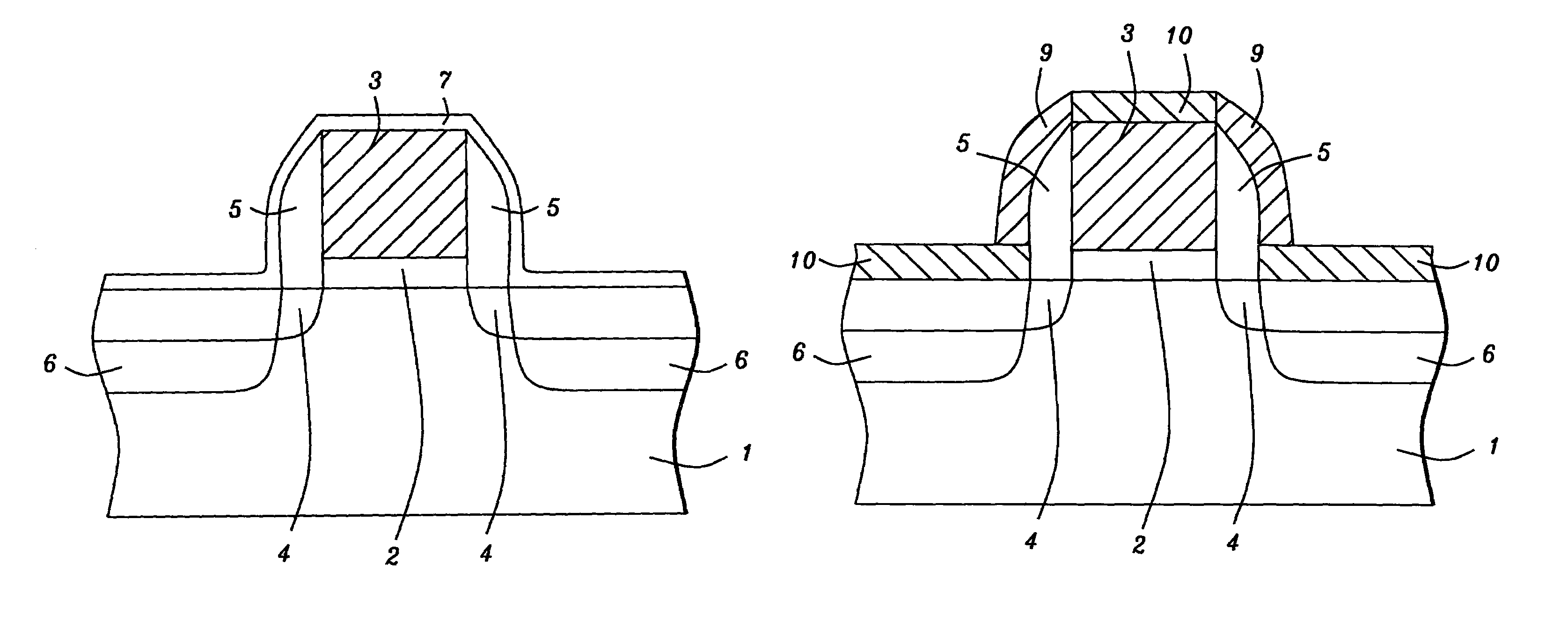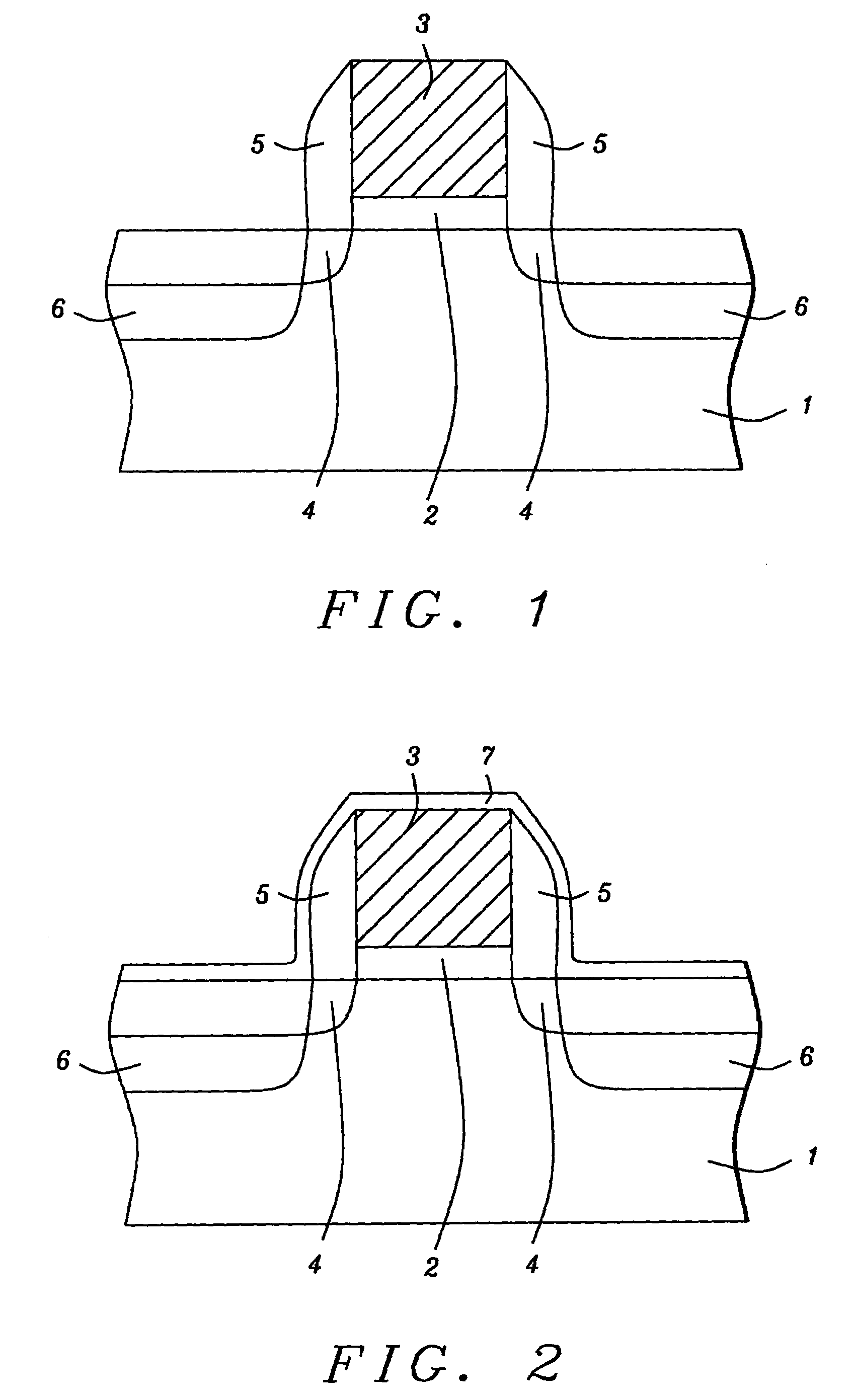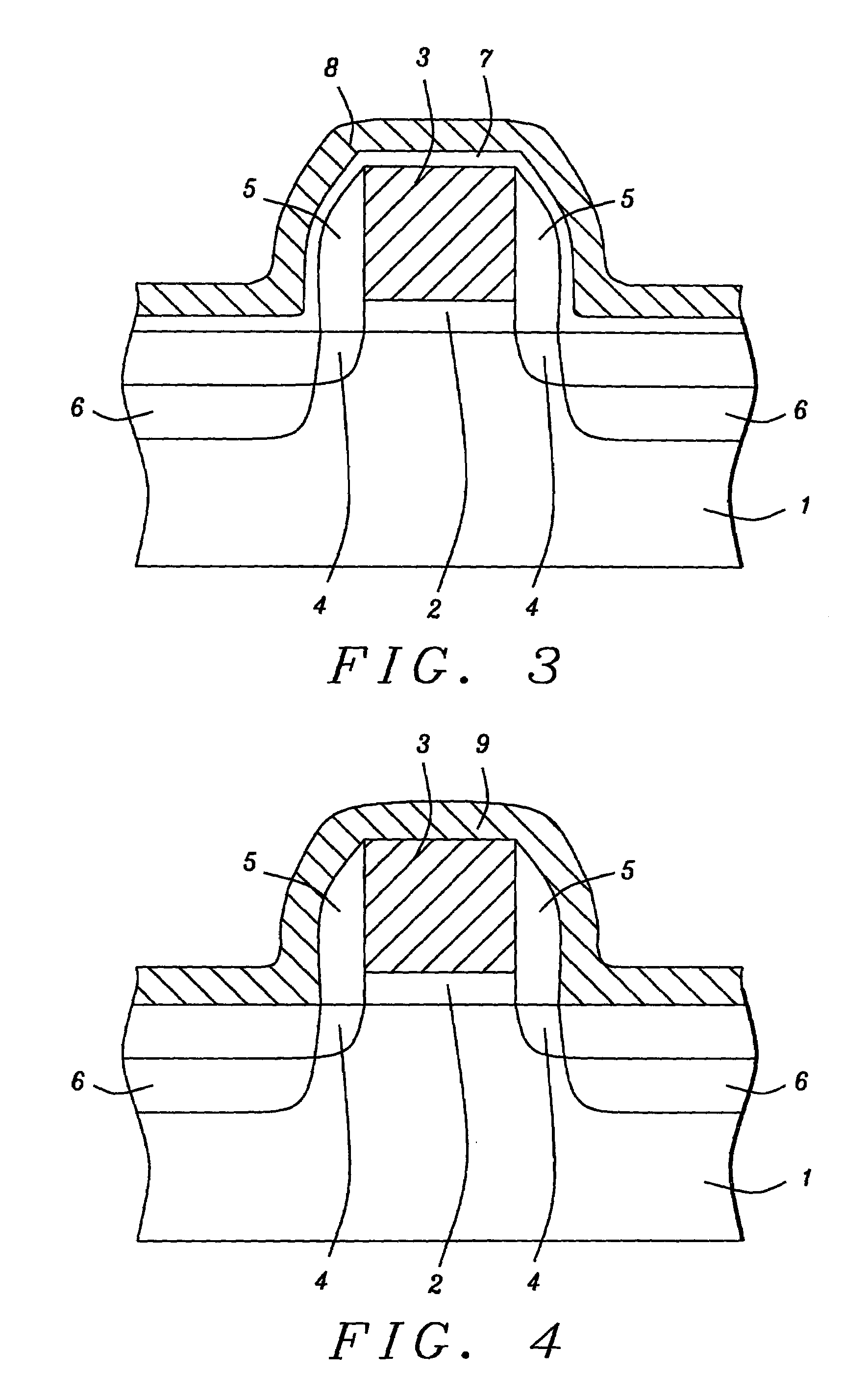Method of forming metal silicide
a metal silicide and metal silicide technology, applied in the direction of semiconductor devices, electrical equipment, basic electric elements, etc., can solve the problems of source/drain region, low resistance of titanium silicide, and presenting risks, so as to reduce the instability of nickel silicide and achieve rapid thermal anneal
- Summary
- Abstract
- Description
- Claims
- Application Information
AI Technical Summary
Benefits of technology
Problems solved by technology
Method used
Image
Examples
Embodiment Construction
[0013]The method of forming nickel silicide on MOSFET device regions featuring a thin titanium interlayer, obtained via ALD procedures and employed to allow nickel silicide to be formed at temperatures in which nickel silicide instability is eliminated, will now be described in detail. This invention will be described for an N channel MOSFET device, however it should be understood that this invention can also be applied to a P channel MOSFET as well as to a complimentary (CMOS) device. FIG. 1, schematically shows the MOSFET device to which this invention will be applied. P type semiconductor substrate 1, comprised of single crystalline silicon featuring a crystallographic orientation is used. Gate insulator layer 2, comprised of silicon dioxide is thermally grown to a thickness between about 10 to 100 Angstroms. If desired a high dielectric constant (high k), layer, with a dielectric constant greater than 4, can be used as a gate insulator layer. Conductive gate structure 3, a stru...
PUM
| Property | Measurement | Unit |
|---|---|---|
| thickness | aaaaa | aaaaa |
| thickness | aaaaa | aaaaa |
| dielectric constant | aaaaa | aaaaa |
Abstract
Description
Claims
Application Information
 Login to View More
Login to View More - R&D
- Intellectual Property
- Life Sciences
- Materials
- Tech Scout
- Unparalleled Data Quality
- Higher Quality Content
- 60% Fewer Hallucinations
Browse by: Latest US Patents, China's latest patents, Technical Efficacy Thesaurus, Application Domain, Technology Topic, Popular Technical Reports.
© 2025 PatSnap. All rights reserved.Legal|Privacy policy|Modern Slavery Act Transparency Statement|Sitemap|About US| Contact US: help@patsnap.com



